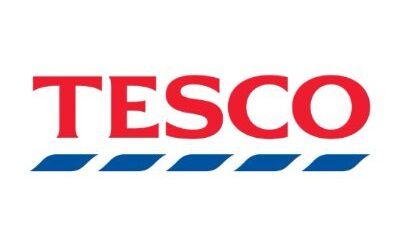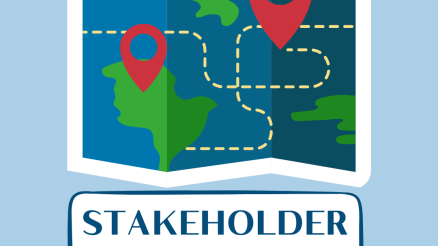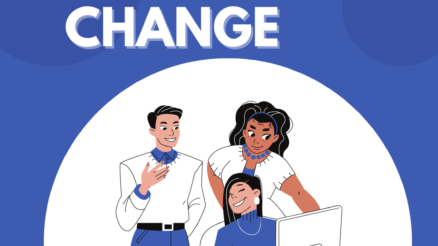There are a variety of change management tools available to help organizations manage and implement change.
These tools can be used to assess the current state, plan and track progress, identify risks and implement change activities.
There are generally two types of change management tools. First, software tools that are applications that organizations use to make change process as easy and smooth as possible for employees and other stakeholders.
Second, there are different types of change management models and frameworks developed by theorists and practitioners of change management over the years.
So question is what is the right tool?
It depends on what type of organizational change you’re working on and what kind of activities you’re implementing in your change initiative.
We’ve gathered a list of 20 best change management tools which help you to implement your change idea. In the description of each of tool, there are some key features and benefits are also mentioned so that you can make informed choice to support your change project.
Let’s explore each of these.
Best Change Management Tools
1. The Change Compass
Change Compass helps managers and practitioners to better visualise and plan change activities. With this tool, managers can understand results and outcome of change and know impact of change.
Its key features include management of customer impacts, tracking of strategy execution and knowing improvement in change governance. It also generates change heat maps which are useful for leaders and managers to make informed decisions about change.
Managers can use this tool to implement agile change and go above and beyond stakeholder expectations. To achieve amazing transformation, they can use automation, AI, and template technology with the help of this tool.
2. Viima
Viima, which is free for unlimited users, is the finest software and change management tool to converting concepts into interventions. Viima is the all-in-one innovation platform that guides you through each step of the change management process from ideas to actions.
You can collect ideas from your staff, customers and other stakeholders with Viima which prioritised these to help you choose these prioritised the most appropriate ones for development.
You can identify and remove bottlenecks by analyzing your creative process with the aid of Viima.
3. The Change Shop
The Change Shop tools assist in achieving change management objectives by concentrating change leaders on the most crucial behaviors that fuel a commitment to change on both the individual and team levels.
The tool offers actionable, precise, and useful guidance on how to improve change leadership and make change results attainable. Every respondent receives a targeted, simple-to-understand report, and the survey takes less than 10 minutes to complete.
The Change Shop allows team members the opportunity to voice their thoughts on the change’s importance and potential solutions. It compares results
To give an understanding of what is feasible; it compare results to those of similar industries and strong performers.
4. Whatfix
Whatfix is a digital platform that provides employee with onboarding support and training. It has interactive walkthroughs that helps organizations to navigate through every step of change.
Whatfix ensures that employees spend fewer hours onboarding and more time working when there are interactive workflows and guidance available.
It makes switching from one tool to another simple for users. And users learn new applications more quickly thanks to in-app learning.
The adoption process is distinct for each user. You can provide contextual, self-service help modules with Whatfix at any point during their training process.
Its support procedures are distant to each team member which lessens confusion and inconvenience.
5. Walkme
WalkMe’s Digital Adoption Platform is a change management tool that measures, motivates and takes actions to maximize the potential of your change management strategy.
It helps to fix errors and accomplish change goals with the support of custom desktop notifications, easy Help Desk access, insights into digital behvior and self-paced on-boarding list etc.
It uses actionable data to promote the change process by increasing insight into employee journeys throughout the change process.
It helps to achieve your business objectives, and track and improve user experiences throughout the IT stack.
6. Howspace
Howspace is a digital platform that provides collaboration between different users throughout the change process.
It is designed like a social media platforms and allow every user to generate ideas and content. Every discussion and ideas are documented in this tool.
Users can share different resources about change management and give their feedback on conversations and discussions.
It has a AI powered analytics which analyze data and identify relevant topics and other important points which are helpful to track progress.
7. Force Field Analysis
Force Field Analysis helps change leaders to map and analyse the different factors which are influencing a change initiative.
There are five steps of Force Field Analysis.
First is to explain the change vision and plan.
The second step is to specify what are the drivers of change and the third is what are barriers of change.
The forth step is to analyse these forces and assign these with scores on the basis of their power and weakness.
The fifth step is to analyse and apply on the basis of results of this analysis.
If score of driving forces is greater than the barriers then change leaders should go ahead with their change plans.
8. Stakeholder Analysis
Stakeholder analysis is also a useful tool and is applied widely by change leaders to asses who are their stakeholders and what does change mean to them and how they can contribute to accomplish goal of change.
This analysis has three steps. First, its important to define your stakeholders. Prepare a comprehensive list of diverse stakeholders who are affected by change plan.
Second step is to differentiate stakeholders by the level of their interest and stake in change project.
Third step is to prepare a stakeholder matrix which categories each of stakeholder with what value they bring to change and what are their needs.
This step aids in identifying the stakeholders and the reasons why they find value in a project. For each project, businesses can employ stakeholder analysis in a variety of contexts, including urban planning or government agencies.
9. Awareness, Desire, Knowledge, Ability, and Reinforcement (ADKAR) Analysis
ADKAR change model is about influencing change on an individual who is supposed to be part of organizational change. It stands for Awareness, Desire, Knowledge, Ability and Reinforcement.
The first step is create awareness or understanding about change idea followed by to create desire or willingness among employees and stakeholder to execute that idea.
The next step is to provide them with necessary knowledge about the change followed by building their capacity and ability to implement that change. The last step is to sustain and reinforce that change.
This change management tool is simple and practical and emphasise on human resource.
10. Lewin’s Change Model
Unfreeze, change, and refreeze are the three processes that makeup Lewin’s change model, which makes it quick and easy to bring about change. This model has three stages of change:
Unfreeze, is the first stage and it is about making preparation of change and analysing what are resources available for change and what are required to make change happen.
Change is the second stage and it is about implementing change. Leaders and managers put change into action, communicate its importance and manage team members and provide support to implement change.
Refreeze is the third stage which is about consolidating results of change and sticking to those results. It is about measuring success and knowing what change bring to organization and how it is contributing to organizational success.
11. Kotter’s 8-Step Change Model
Kotter’s 8-Step Change Management Model is a method designed to implement change in following eight steps:
- Step 1. Create a sense of urgency to convince team members about change.
- Step 2. Bring like-minded team members together and build a coalition.
- Step 3. Create a clear vision of each component of change.
- Step 4. Communicate vision of change.
- Step 5. Identify challenges or obstacles and fix them.
- Step 6. Create short term wins
- Step 7. Build on momentum, push harder to achieve impactful change
- Step 8. Institutionalize change and maintain these by developing a culture
12. Culture Mapping
The process of visualizing a company’s culture using accepted norms and behaviours.
Additionally useful as project management tools, culture maps enable the finding of information crucial to a change initiative, define favorable enablers, and provide guidance on how to lower risks.
Project managers frequently use this tool to visually depict a company’s culture so that staff members can better grasp it. This tool is one of many change management tools that change leaders use to alter corporate cultures.
13. Strategic Planning
Compared to the other tools, strategic planning takes a much more top-down approach. Change leaders use this technique to clearly articulate their vision on paper and then create a strategy for carrying it out.
Strategic planning is done in 5 steps: First is to identify what is the current state of organization and what is the strategic plan about the future. SWOT is a good technique to undertake this first step.
The second step is to prioritise goals of change which are relevant to overall organizational vision. The goals must be practical and key performance indicators of every goal need to be prepared.
The third step is to work together to make plan of how to achieve strategic goals. The goals can be broken down into further smaller activities and tasks so that actions can be taken.
The forth step is to put all plans into action. In this step communication is important to assign role and responsibilities and implementing decisions made by change leaders.
The fifth step is review the plan and make adjustments that are required to move forward. It is also about reviewing performance against the set goals and give recommendations to make adjustment in goals if necessary.
14. Customer Relationship Management (CRM)
CRM is a tool that covers every aspect of a customer management. It deals with customer onboarding, managing queries and issues of customers and ensuring service is delivered in a professional manners.
CRM has five steps.
- First is to reach your customer and create brand awareness.
- Second is to make lead acquisition
- Third is to engage customer through conversion
- Fourth is to retain customer
- Fifth is to ensure customer loyalty
CRM tool is helpful for change managers to assess and know what customer preferences are how to communicate change to customers.
15. Personal Development Plans (PDP)
Personal development plans enable employees to take charge of their growth, ensuring they achieve both their own and the company’s goals through a continuous process of gradual, achievable improvement.
PDP starts with undertaking analysis of strengths, weaknesses, opportunities, and threats (SWOT). When SWOT analysis is done then next four steps are: setting goals, developing an action plan, devising strategies and resources required to complete action plans and tracking your progress and success.
16. Benchmarking
Change leaders and managers use benchmarking in four different ways to help implementation of change. Using this benchmarking techniques, leaders use date to determine what change strategy is required to accomplish change goal and what resources will be required.
First is performance benchmarking which identifies performance gaps and change leaders use data to make decision about desired change.
Second is practice benchmarking which focus on inconsistencies in performance and how to improve on these.
Third is internal benchmarking which offers analysis of two different units and products or departments within organization.
The fourth way is external benchmarking which is about comparing data of one organization or of one business with other.
17. The Change Shop
The Change Shop comprise six tools which aims to give solutions of different change management problems. Change managers can assess employees’ participation in change management and monitor progress and assess what are risks and problems impeding progress.
There is an unique feature of this tool that you can create “what-if” scenarios to identify potential risk and challenges or threats posed to change. In addition to this, it offers solutions to these negative issues.
The most important benefit of this tool is that it help managers to focus on human side of change management and find out solution to resistance to change and improve employee engagement.
18. The ChangeGear
ChangeGear is IT focussed change management software. It uses advanced automation through a simple interface that help its user to manage change process.
This tool has multiple roles such as minimizing bottlenecks for DevOps and reducing risks in IT. It helps change managers with presenting visual reporting, metrics and KPIs through dashboards. Managers can keep track changes through SLA management and it also help to minimise risk by having a repository of all changes made during the process.
19. OrgMapper Influence
The role of change agent and influencers is important in change management. This tool helps you to find out influencers within your organization. It identifies strong influencers and change agents within organization and also it provides a systemic way to engage them to support change process.
Its key feature is strength mapping reports which offer a way to communicate information about change so that it is received and taken well by employees.
Based on insights generated by reports, managers can improve change strategy and revisit their decisions to manage change.
This tool helps managers to asses their communication strategy and key messages delivered to stakeholders.
20. Scribe
Scribe offers unique solutions to document changes and standard practices adopted during change management.
It allows users to keep documentation of entire process and changes being made in implementation of change initiative. It automates entire documentation of change.
Another unique feature of Scribe is that individual documentation is shared through link or accessible workspaces.
Final Words
Today, there are several change management tools available to help implement change project. Some tools are digital platforms and software available to support change process. Other tools are theoretical frameworks and model validated by practitioners and offer great value in terms of application to different steps of change. Each of these tools have their own unique features and benefits and their application depends on type of change and resources available to use them.



